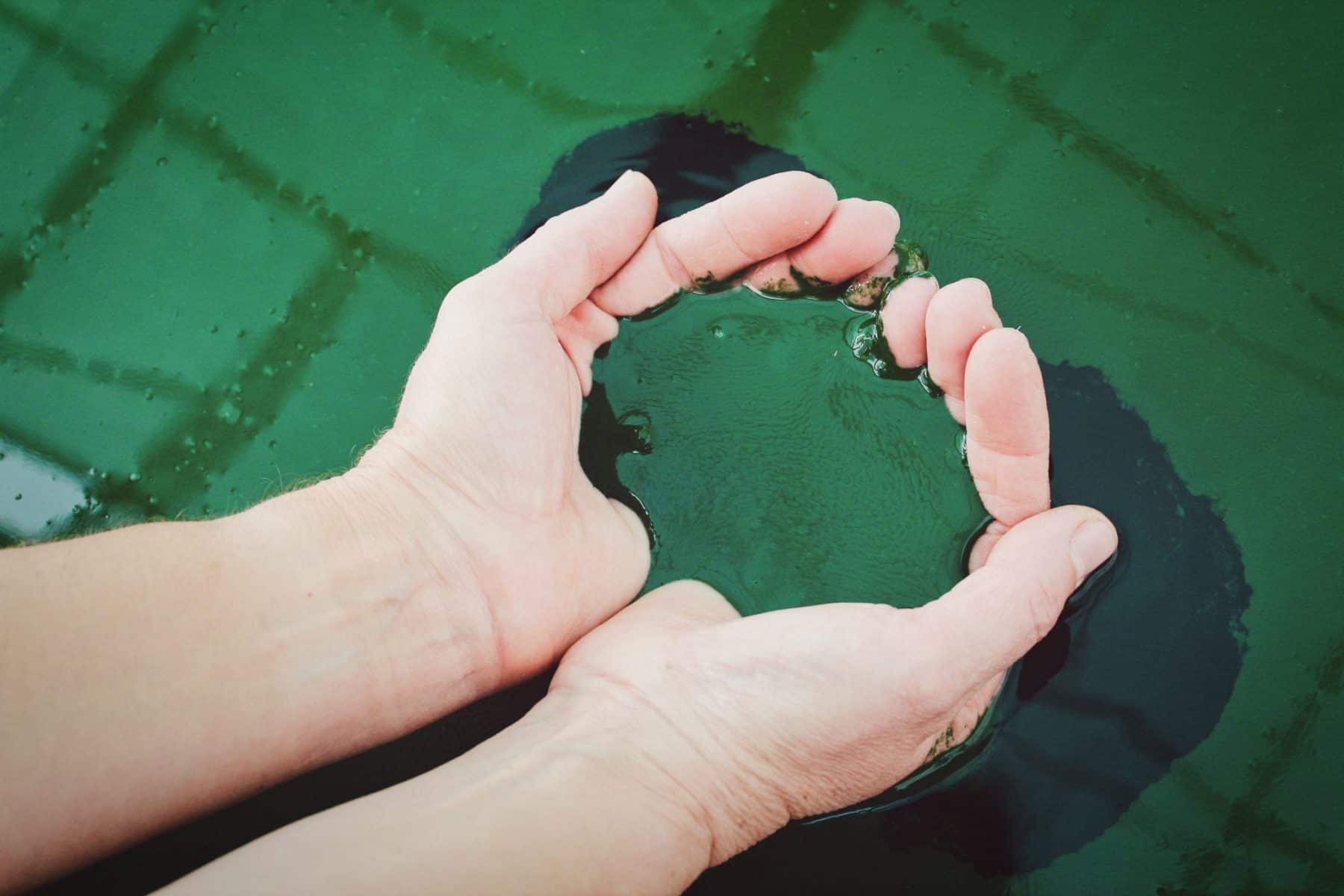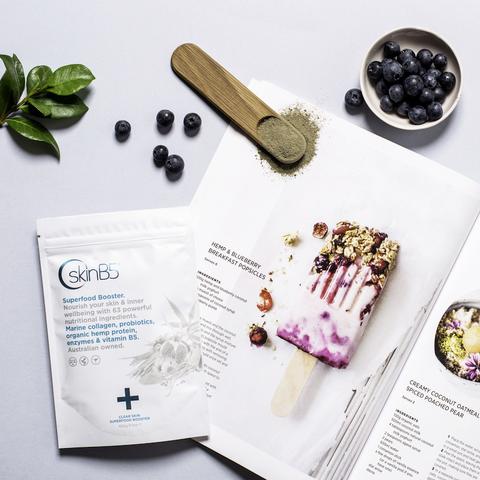Once a nutritious food source for the Aztecs, spirulina is a blue-green algae which is rich in nutrients and antioxidants. Known for its ability to boost energy and immunity, this colourful powerhouse is also great for the skin.
What is spirulina?
Spirulina is a mass of algae which grows in the water of tropical and subtropical regions. It’s usually found floating in clumps on the surface of the water, and is otherwise known as pond scum.
Don’t let that scare you off though – it’s an excellent source of iron, chlorophyll and fatty acids. It even contains up to 70% protein – quite a lot for such a microscopic food source!
Spirulina is also packed with beta carotene, vitamin K, choline and folate, and is a good source of calcium, magnesium and potassium. It’s so nutrient-rich that many organisations are studying it for use in treating malnutrition, with encouraging results so far.
This little cyanobacteria (which translates to blue-coloured bacteria) is distinctive for its colour, which comes mainly from the antioxidant known as phycocyanin. This little powerhouse can help to fight free radicals and prevent inflammation. Some small studies show promise for its use in hayfever, high blood pressure and lowering cholesterol.
Spirulina is also incredibly environmentally friendly. It’s easily grown without the use of pesticides and is mostly dried into tablets or powders for easy supplementation.
Spirulina for the skin
The skin is a reflection of your internal health, and what happens on the inside is highly dependent on your diet and lifestyle.
Spirulina might be small, but the high density of nutrients means it can help out where your salad is lacking. And let’s face it, some days it’s easier to swallow a teaspoon of green powder than it is to consume a family-sized bowl of fresh greens (although we recommend you eat both).
Its function as an anti-inflammatory is also hugely useful, especially for inflammatory skin conditions like acne. The GLA fatty acids found in spirulina are known to reduce inflammation and help maintain the skin barrier, keeping us comfortably water-resistant.
The plant nutrients in spirulina include beta-carotene, which is converted by the body to vitamin A. This vitamin helps to promote healthy skin and repair damaged skin. It also acts as an antioxidant which protects the skin from wrinkles. Yay for Vitamin A!
Other antioxidants in spirulina include zeaxanthin and phycocyanin. These are responsible for protecting the skin from damage by pollution and those bothersome free radicals which cause wrinkles and ageing. Phycocyanin especially seems to help with cell regeneration, which is quite useful when our skin is continually sloughing off old layers and replacing them.
In a world where pollution and toxic substances are unavoidable, something like spirulina is super-useful for protecting our skin and organs. It not only keeps us healthy on the inside but helps our skin to remain clear, healthy and glowing with good nutrition.
Who’d have thought that a little bit of algae could be so good for you?
Mem Davis is a naturopath, writer, and food lover. She loves feeling healthy and strong and is a proud vegan nutrition advocate. In her spare time, she goes hiking, attends live music events and hangs out with her cuddly cat.
Sources:
Cox, L. (2018). Spirulina: Nutrition Facts & Health Benefits. [online] Live Science. Available at: https://www.livescience.com/48853-spirulina-supplement-facts.html [Accessed 24 Nov. 2018].
Nutritiondata.self.com. (2018). Seaweed, spirulina, dried Nutrition Facts & Calories. [online] Available at: https://nutritiondata.self.com/facts/vegetables-and-vegetable-products/2765/2 [Accessed 24 Nov. 2018].
Cyanotech.com. (2018). Publications – Spirulina – Cyanotech. [online] Available at: https://www.cyanotech.com/publications-spirulina/ [Accessed 24 Nov. 2018].
Romay, C., Gonzalez, R., Ledon, N., Remirez, D. and Rimbau, V. (2003). C-Phycocyanin: A Biliprotein with Antioxidant, Anti-Inflammatory and Neuroprotective Effects. [online] Cyanotech.com. Available at: https://www.cyanotech.com/pdfs/spirulina/sptl28.pdf [Accessed 24 Nov. 2018].
Deng, R. and Chow, T. (2010). Hypolipidemic, Antioxidant and Antiinflammatory Activities of Microalgae Spirulina. [online] NCBI. Available at: https://www.ncbi.nlm.nih.gov/pmc/articles/PMC2907180/ [Accessed 24 Nov. 2018].
Asghari, A., Fazilati, M., Latifi, A., Salavati, H. and Choopani, A. (2016). Antioxidant Properties of Spirulina. [online] Journal of Applied Biotechnology Reports. Available at: https://journals.bmsu.ac.ir/jabr/index.php/jabr/article/view/97 [Accessed 24 Nov. 2018].
Braun, L. and Cohen, M. (2005). Herbs & Natural Supplements: An evidence based guide. 1st ed. Marrickville, Australia: Elsevier Mosby.








Leave A Comment